- Petrolatum
-
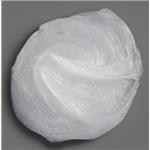
- $30.00 / 1kg
-
2024-03-19
- CAS:8009-03-8
- Min. Order: 1kg
- Purity: 99.9(%)
- Supply Ability: 30 tons
- Petrolatum
-
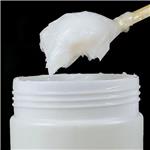
- $0.00 / 1kg
-
2023-12-25
- CAS:8009-03-8
- Min. Order: 1kg
- Purity: 99%
- Supply Ability: 1000000
- Petrolatum
-
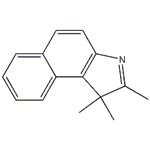
- $0.00 / 25kg
-
2023-11-01
- CAS:8009-03-8
- Min. Order: 25kg
- Purity: >=99%
- Supply Ability: 5000kg
|
| Product Name: | Petrolatum | | Synonyms: | protopet,alba;protopet,white1s;protopet,white2l;PETROLEUM WAX;PETROLATUM;PETROLATUM, WHITE;PETROLATUM, YELLOW;PARAFFIN LIQUID (HEAVY) | | CAS: | 8009-03-8 | | MF: | C15H15N | | MW: | 209.2863 | | EINECS: | 232-373-2 | | Product Categories: | UVCBs-organic | | Mol File: | 8009-03-8.mol | 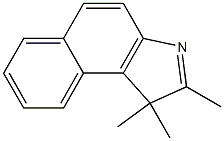 |
| | Petrolatum Chemical Properties |
| Melting point | 70-80 °C ((ASTM D 127)) | | Boiling point | 322 °C | | density | 0.84 | | refractive index | n20/D 1.45 | | Fp | 198 °C | | storage temp. | Sealed in dry,Room Temperature | | solubility | Practically insoluble in acetone, ethanol, hot or cold
ethanol (95%), glycerin, and water; soluble in benzene, carbon
disulfide, chloroform, ether, hexane, and most fixed and volatile
oils. | | form | extra-low viscosity oil | | color | white | | Specific Gravity | 0.815~0.880 (60℃) | | PH | pH (25℃) : 4.5~8.0 | | Odor | Odorless | | Water Solubility | Insoluble in water | | Dielectric constant | 2.0(Ambient) | | Stability: | Stable. Combustible. Incompatible with strong oxidizing agents. | | EPA Substance Registry System | Petrolatum (8009-03-8) |
| | Petrolatum Usage And Synthesis |
| Summary | Petrolatum (Vaseline) is the malthenes purified from lubrication oil, the mixture of residue oil and cerate. It is an important lubricant for medicines, cosmetics, fine chemical raw materials and precision instruments. In China, major vaseline products include ordinary vaseline, industrial vaseline and medical vaseline. Ordinary vaseline is suitable for the preparation of various ointments and softener of dark rubber products; industrial vaseline can be used to protect metal products and general machinery parts against rust and lubricate machines under light loads, but also can be used as treating compound for leather and rubber softener. Vaseline products are mainly concentrated in the medicinal Vaseline, which is divided into two: medical white vaseline and medical yellow Vaseline. Medical Vaseline is mainly used in the preparation of ointment, skin protection cream and cosmetics raw materials, as well as antirust and lubricating materials for medical instruments and precision instruments.
| | Performance | White or yellow homogeneous paste, almost odorless and tasteless, a mixture of liquid and solid paraffin hydrocarbons. Relative density: 0.815~0.830, viscosity: 0.01 ~ 0.02 Pa•s (100℃), flash point > 190℃ (open type), drop point: about 37~54℃. It is easy to dissolve in ethyl ether, petroleum ether, fatty oil, benzene, carbon disulfide, chloroform and turpentine, difficult to dissolve in ethanol and almost insoluble in water. It is heated into a transparent liquid, which can be fluorescent in the dark after ultraviolet radiation.
| | Uses | With the characteristics of no color or smell, chemical inertness, semisolid, lipophilic property and good adhesion, it is suitable to manufacture substrates of hair cream, hair conditioner, eye cream, lipstick, wax matrix and so on. Medical petrolatum (vaseline) can be widely used as the matrix of ointment because it is almost compatible with all drugs without changes in drugs. Hydrophilic vaseline can be prepared by adding alcohols such as stearyl alcohol, cetyl alcohol and cholesterol after heated fusion and sufficient stir. Hydrophilic vaseline is an ointment base with strong permeability, stability and small stimulation.
This ointment matrix can be used alone for dry skin rash, erythema, papules and other diseases, especially for the removal of blood scab and desquamation. Vaseline can also be used as a non-ionic emulsifier to be compatible with cholesterol, so the range of compatibility is very wide. In addition, it can be compatible with liquid drugs or aqueous solutions of drugs because of its absorbability. Industrial vaseline can be used as rubber softener, anti-rust of metal devices and raw material of rust proof grease.
| | Production | Acid-carclazyte method
Acid-carclazyte method is a traditional method for the production of petrolatum (vaseline), which is still in use at home and abroad. In the process, add sulfuric acid with more than 98% concentration measured up to about 60% of raw materials and mix it with the raw material in the reactor. The reaction temperature is kept at 70℃. After the reaction, the acid residue is separated and diluted with alcohol to further remove the acid residue. The oil treated with acid in another clay refining tank is decolorized with carclazyte at about 140℃, and then filtered to obtain the final product.
The characteristics of the acid-carclazyte method: the high-quality parts can be produced, PAHs can reach the level of pharmaceutical grade and other relevant indicators can meet the quality index of the pharmacopoeia, which is the reason of traditional craft’s long time existence. The main disadvantage of the method is too low goal product yield (about 50%) and a large number of acid residues which is difficult to be utilized resulting in serious environmental pollution and very high production cost.
Aluminum chloride method
Aluminum chloride method has taken place of acid-carclazyte method to produce vaseline from 60s at home. The process is as follows: the raw material reacts with aluminum chloride after dehydration in the reactor, reaction temperature is between 130℃ to 140℃. After the reaction, the oil will be neutralized and precipitated with alkali liquor in the neutralization tank. Then remove the slag and refine by carclazyte adsorption in the decolorizing tank. Vaseline product is obtained by filtering refined oil at about 120℃. The yield of aluminum chloride method is higher than that of acid-carclazyte method, and consumption index seems lower, but the quality is slightly worse; compared with vaseline produced by medium-pressure hydrocracking and high pressure hydrogenation was there is a great gap in color, transparency, the content of polycyclic aromatic hydrocarbons and so on.
Hydrogenation method
Hydrogenation method is a new process for the production of vaseline, which is usually carried out with 10, 20, or 30MPa and lower liquid hourly space velocity. The process is to convert the useless components in the raw materials into effective components, so that the product yield can be nearly 100%. But aluminum chloride method or acid-carclazyte method changes useless components into waste slags to dump containing effective components, which reduces the product yield. Due to the product yield, the refining extent of luminum chloride method or acid-carclazyte method is also limited, thus limiting the further improvement of product quality. So the hydrogenation method is better than aluminum chloride method and acid-carclazyte method both in product yield or quality.
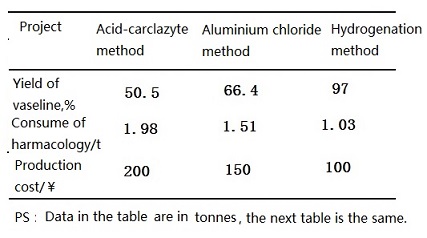
Figure 1. Economic comparison in three kinds of vaseline production processes
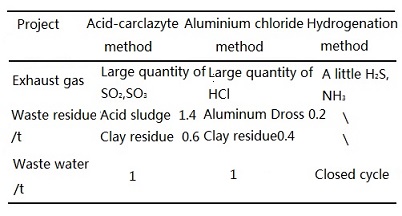
Figure 2. Comparison in three wastes from three production processes of vaseline | | Distinguishing test | Solubility: It is insoluble in water, easily soluble in carbon dioxide, soluble in ether and hexane (OT-42).
| | Toxicity | Safe for food (FDA, §172.880,2000).
ADI has not been stipulated (FAO/WHO, 2001).
| | Utilization limit | Baked food 0.15%; candy 0.2%; dehydrated fruits and vegetables 0.02%; solid protein 0.1%(FDA,§172.880,2000).
| | Chemical properties | A white, yellow or light amber semisolid fatty substance. Transparent when thin-layered, slightly fluorescent. Insoluble in water, almost insoluble in cold or hot ethanol and cold anhydrous ethanol. Soluble in ether, hexane and most volatile or non-volatile oil; easily soluble in benzene, carbon disulfide, chloroform and turpentine.
| | Uses | Defoamer; lubricant; release agent; protective coating.
The product is suitable for preparing ingredients of medicine ointment and skin protection cream. It can be used for the anticorrosion of mechanical equipments, metal and parts, especially precision instruments, medical equipment and other advanced products. It can be used as lubricating grease in anti-attrition parts of machines when the temperature is not high and the mechanical load is not large. It can be used as the ingredients of high-end cosmetics and other daily necessities, such as skin care cream, hair cream, lipstick pomade ,etc.
| | Chemical Properties | clear to white solid | | Chemical Properties | Petrolatum is a pale yellow to yellow-colored, translucent, soft
unctuous mass. It is odorless, tasteless, and not more than slightly
fluorescent by daylight, even when melted. | | Uses | petrolatum (petroleum jelly; Vaseline) softens and smoothes the skin. It forms a film on the skin’s surface, preventing moisture loss caused by evaporation, and protecting against irritation. Its disadvantage lies in the difficulty of effectively and properly removing it from the skin. Studies indicate that petrolatum accelerates the recovery of skin surface lipids, permeating throughout the stratum corneum layer, and allowing normal barrier recovery despite its occlusive properties. Thus it does not form or act as an impermeable membrane. It is a purified mixture of semisolid hydrocarbons from petroleum. Petrolatum imparts a greasier feeling than other emollients and also has the potential for clogging pores and causing comedogenicity. Although it can cause allergic skin rashes, petrolatum is non-toxic to the skin when properly purified and of high grade. | | Uses | Petrolatum is a release agent, lubricant, and defoaming agent that is
a purified mixture of semisolid hydrocarbons obtained from petro-
leum. it varies in color from white to yellow. it is used in bakery
products, dehydrated fruits and vegetables, and egg white solids. | | Uses | Pharmaceutic aid (ointment base, oleaginous); Protectant
(topical). | | Production Methods | Petrolatum is manufactured from the semisolid residue that remains
after the steam or vacuum distillation of petroleum.This residue
is dewaxed and/or blended with stock from other sources, along
with lighter fractions, to give a product with the desired consistency.
Final purification is performed by a combination of high-pressure
hydrogenation or sulfuric acid treatment followed by filtration
through adsorbents. A suitable antioxidant may be added. | | Definition | Petrolatum is a complex combination of hydrocarbons obtained as a semi-solid from dewaxing paraffinic residual oil. It consists predominantly of saturated crystalline and liquid hydrocarbons having carbon numbers predominantly greater than C25. | | Brand name | Moroline (Schering-Plough HealthCare). | | General Description | Dark brown, green, amber or white odorless thick liquid. Floats on water. | | Reactivity Profile | Petrolatum is unreactive in most circumstances. | | Health Hazard | LIQUID: Irritating to eyes. | | Fire Hazard | Combustible. | | Flammability and Explosibility | Not classified | | Pharmaceutical Applications | Petrolatum is mainly used in topical pharmaceutical formulations as
an emollient-ointment base; it is poorly absorbed by the skin.
Petrolatum is also used in creams and transdermal formulations and
as an ingredient in lubricant formulations for medicated confectionery
together with mineral oil.
Therapeutically, sterile gauze dressings containing petrolatum
may be used for nonadherent wound dressings or as a packing
material.Petrolatum is additionally widely used in cosmetics and
in some food applications. | | Safety Profile | When heated to decomposition it emits acrid smoke and irritating fumes | | Safety | Petrolatum is mainly used in topical pharmaceutical formulations
and is generally considered to be a nonirritant and nontoxic
material.
Animal studies, in mice, have shown petrolatum to be nontoxic
and noncarcinogenic following administration of a single subcutaneous
100 mg dose. Similarly, no adverse effects were observed in a
2-year feeding study with rats fed a diet containing 5% of
petrolatum blends.
Although petrolatum is generally nonirritant in humans following
topical application, rare instances of allergic hypersensitivity
reactions have been reported,as have cases of acne, in susceptible individuals following repeated use on facial skin.
However, given the widespread use of petrolatum in topical
products, there are few reports of irritant reactions. The allergic
components of petrolatum appear to be polycyclic aromatic
hydrocarbons present as impurities. The quantities of these
materials found in petrolatum vary depending upon the source
and degree of refining. Hypersensitivity appears to occur less with
white petrolatum and it is therefore the preferred material for use in
cosmetics and pharmaceuticals.
Petrolatum has also been tentatively implicated in the formation
of spherulosis of the upper respiratory tract following use of a
petrolatum-based ointment packing after surgery,and lipoid
pneumonia following excessive use in the perinasal area.Other
adverse reactions to petrolatum include granulomas (paraffinomas)
following injection into soft tissue.Also, when taken orally,
petrolatum acts as a mild laxative and may inhibit the absorption of
lipids and lipid-soluble nutrients.
Petrolatum is widely used in direct and indirect food applications.
In the USA, the daily dietary exposure to petrolatum is
estimated to be 0.404 mg/kg body-weight.
For further information see Mineral Oil and Paraffin. | | storage | Petrolatum is an inherently stable material owing to the unreactive
nature of its hydrocarbon components; most stability problems
occur because of the presence of small quantities of impurities. On
exposure to light, these impurities may be oxidized to discolor the
petrolatum and produce an undesirable odor. The extent of the
oxidation varies depending upon the source of the petrolatum and
the degree of refinement. Oxidation may be inhibited by the
inclusion of a suitable antioxidant such as butylated hydroxyanisole,
butylated hydroxytoluene, or alpha tocopherol.
Petrolatum should not be heated for extended periods above the
temperature necessary to achieve complete fluidity (approximately
70°C).
Petrolatum may be sterilized by dry heat. Although petrolatum
may also be sterilized by gamma irradiation, this process affects the
physical properties of the petrolatum such as swelling, discoloration,
odor, and rheological behavior.
Petrolatum should be stored in a well-closed container, protected
from light, in a cool, dry place. | | Incompatibilities | Petrolatum is an inert material with few incompatibilities. | | Regulatory Status | GRAS listed. Accepted for use in certain food applications in many
countries worldwide. Included in the FDA Inactive Ingredients
Database (ophthalmic preparations; oral capsules and tablets; otic,
topical, and transdermal preparations). Included in nonparenteral
medicines licensed in the UK. Included in the Canadian List of
Acceptable Non-medicinal Ingredients. |
| | Petrolatum Preparation Products And Raw materials |
|